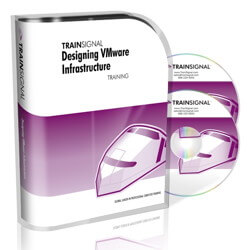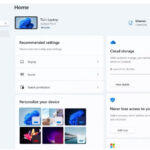
Год выпуска: 2011
Автор: Jeremy Cioara
Продолжительность: 10:59:17
Тип раздаваемого материала: Видеоурок
Язык: Английский
Стоимость: 1999 рублей
Описание:
This file has been put together to address common issues that have come
up with the Train Signal AVI files embedded in html. See our forums at
http://forums.trainsignal.com/forumdisplay.php?f=5 for technical
support.
[wpspoiler name="Подробное описание" ]
- Getting Started with Designing VMware Infrastructure 00:04:39
- Get Started 04:39
- Designing vSphere Environments in the Real World 00:20:50
- Introduction 00:32
- Introducing the Role of a vSphere Architect 05:24
- Examining the Components of a vSphere Design 01:44
- Reviewing a vSphere Design 12:14
- What We Covered 00:56
- Understanding vSphere Design Terminology 00:15:42
- Introduction 00:41
- Seeing the Need for Design Terminology 01:15
- Understanding Requirements 04:30
- Examining Risks 02:38
- Explaining Assumptions 02:35
- Reviewing Constraints 02:05
- Fitting All These Together 01:23
- What We Covered 00:35
- Determining vSphere Design Factors 00:24:48
- Introduction 03:33
- Determining the Design Factors 02:45
- Gathering Information for Requirements 05:54
- Defining Requirements 05:09
- Identifying Risks, Constraints, and Assumptions 06:44
- What We Covered 00:43
- Defining a Logical Design 00:16:51
- Introduction 00:41
- Understanding Logical and Physical Designs 02:33
- Comparing Logical and Physical Designs 03:34
- Explaining the Role of a Logical Design 02:52
- Mapping Service Dependencies 04:38
- Examining the Components of a Logical Design 01:45
- What We Covered 00:48
- Defining a Logical Compute Design 00:18:44
- Introduction 01:05
- Defining a Logical Compute Design 03:31
- Determining Values to Specify 01:23
- Looking at Example Logical Compute Designs 07:05
- Examining Related Areas 04:34
- What We Covered 01:06
- Creating a Logical Network Design 00:20:56
- Introduction 01:09
- Defining a Logical Network Design 01:20
- Deriving the Logical Network Design 03:32
- Describing the Virtual Network Topology 06:03
- Describing the Physical Network Topology 01:12
- Examining Related Areas 06:08
- What We Covered 01:32
- Creating a Logical Storage Design 00:18:34
- Introduction 01:05
- Examining a Logical Storage Design 01:49
- Calculating Logical Storage Design Specifications 11:06
- Exploring Related Areas 03:24
- What We Covered 01:10
- Building Security Into the Logical Design 00:21:00
- Introduction 01:00
- Reviewing Available Security Solutions 03:47
- Mapping Requirements to Security Solutions 07:20
- Considering Related Areas 02:49
- Examining Design Impact 05:05
- What We Covered 00:59
- Specifying Backup and Availability in the Logical Design 00:19:32
- Introduction 02:42
- Examining Backup and Availability Needs 01:36
- Surveying Backup and Availability Solutions 02:36
- Identifying Backup and Availability Requirements 01:44
- Evaluating Solutions Based on Requirements 04:14
- Reviewing Related Areas 01:28
- Analyzing Design Impact 03:57
- What We Covered 01:15
- Designing the Management Layer 00:21:20
- Introduction 01:10
- Reviewing Broad Management Strategies 08:11
- Incorporating Security Solutions 02:32
- Incorporating Backup and Availability Solutions 02:30
- Accommodating Other Management Components 01:16
- Identifying Dependencies and Impacts 04:28
- What We Covered 01:13
- Mapping the Logical Design to Actual Solutions 00:19:26
- Introduction 01:17
- Reviewing What We've Covered So Far 02:39
- Taking the Next Step in the Design Process 01:17
- Examining How to Map Solutions 08:24
- Selecting Solutions 02:28
- Analyzing for Design Impact 01:56
- What We Covered 01:25
- Creating a Physical Storage Design 00:29:39
- Introduction 01:13
- Reviewing the Logical Storage Design 01:54
- Examining the Key Storage Solution Decisions 02:53
- Choosing the Physical Storage Solution 08:27
- Incorporating VMware Technologies 01:49
- Analyzing for Design Impact 12:00
- What We Covered 01:23
- Creating a Physical Network Design 00:22:51
- Introduction 01:12
- Reexamining the Logical Network Design 01:41
- Listing the Key Network Design Decisions 06:21
- Building the Physical Network Design 07:59
- Analyzing for Design Impact 04:50
- What We Covered 00:48
- Sizing Hosts, Clusters, and Resource Pools 00:24:22
- Introduction 01:08
- Looking Back at the Logical Compute Design 01:25
- Sizing Hosts 07:36
- Creating Clusters 06:13
- Scoping Resource Pools 03:10
- Putting Things Together 02:02
- Analyzing for Design Impact 01:32
- What We Covered 01:16
- Defining VM Attributes 00:20:06
- Introduction 00:53
- Fitting VM Configuration into the Design 02:31
- Allocating Resources to VMs 06:43
- Configuring VMs for Availability 02:46
- Deploying VMs 01:29
- Analyzing for Design Impact 04:46
- What We Covered 00:58
- Incorporating Implementation and Test Plans 00:12:53
- Introduction 00:42
- Examining Implementation Planning 01:05
- Creating an Implementation Plan 03:38
- Understanding the Need for Test Plans 01:13
- Reviewing the Types of Testing 01:24
- Documenting Your Testing 04:10
- What We Covered 00:41
- Bringing It All Together 00:27:19
- Introduction 01:16
- Working Through the Scenario 24:49
- What We Covered 01:14
- Preparing for Your VCAP-DCD Certification Exam 00:04:56
- Preparing for Your VCAP-DCD Certification Exam 04:56
- Next Steps 00:06:22
[/wpspoiler]

